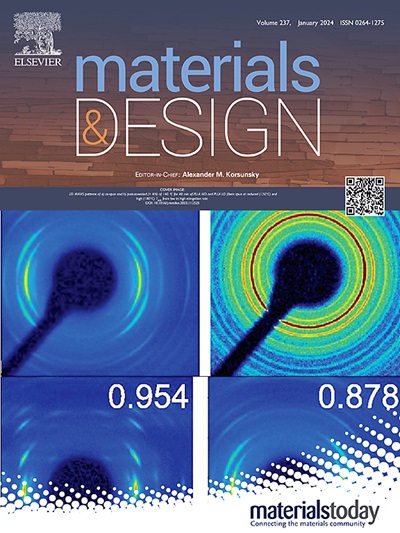Injectable glycyrrhizic acid-based hydrogel with Immunoregulatory and angiogenic properties for diabetic wound healing
IF 7.6
2区 材料科学
Q1 MATERIALS SCIENCE, MULTIDISCIPLINARY
引用次数: 0
Abstract
Diabetic wound healing (DWH) demands multifunctional dressings capable of delivering therapeutic agents to counteract the impaired repair microenvironment. Elevated oxidative stress and chronic inflammation not only suppress regenerative cell viability but also exacerbate apoptosis and vascular dysfunction, collectively hindering wound healing. To address these challenges, we developed an injectable dual-network hydrogel dressing based on immunomodulatory and pro-angiogenic glycyrrhizic acid (GA). This hydrogel combines alkylated glycyrrhizinic acid (AGA) and methacrylated sericin (SFMA) to form a natural extracellular matrix (ECM)-mimetic dual network, achieving both excellent injectability and enhanced mechanical properties. Furthermore, the hydrogel incorporates the pro-angiogenic agent desferrioxamine (DFO) through dynamic covalent bonding, enabling sustained drug release. The resulting AGA/SFMA@DFO hydrogel effectively modulates macrophage polarization and enhances vascular regeneration under inflammatory conditions. Additionally, the residual aldehyde groups in the AGA/SFMA@DFO gel form Schiff base linkages with amino groups on the skin surface, ensuring strong tissue adhesion. Consequently, this multifunctional hydrogel dressing demonstrates significant potential in accelerating diabetic wound repair.

具有免疫调节和血管生成特性的注射用甘草酸基水凝胶用于糖尿病伤口愈合
糖尿病伤口愈合(DWH)需要能够输送治疗药物的多功能敷料,以对抗受损的修复微环境。氧化应激升高和慢性炎症不仅抑制了再生细胞的活力,还加剧了细胞凋亡和血管功能障碍,共同阻碍了伤口愈合。为了应对这些挑战,我们开发了一种基于免疫调节和促血管生成甘草酸(GA)的可注射双网络水凝胶敷料。这种水凝胶结合了烷基化甘草酸(AGA)和甲基丙烯酸化丝胶蛋白(SFMA),形成了天然细胞外基质(ECM)模拟双网络,实现了出色的注射性和更强的机械性能。此外,这种水凝胶还通过动态共价键结合了促血管生成剂去铁胺(DFO),从而实现了药物的持续释放。由此产生的 AGA/SFMA@DFO 水凝胶可有效调节巨噬细胞极化,并在炎症条件下促进血管再生。此外,AGA/SFMA@DFO 凝胶中残留的醛基还能与皮肤表面的氨基形成希夫碱连接,从而确保较强的组织粘附性。因此,这种多功能水凝胶敷料在加速糖尿病伤口修复方面具有巨大潜力。
本文章由计算机程序翻译,如有差异,请以英文原文为准。
求助全文
约1分钟内获得全文
求助全文
来源期刊

Materials & Design
Engineering-Mechanical Engineering
CiteScore
14.30
自引率
7.10%
发文量
1028
审稿时长
85 days
期刊介绍:
Materials and Design is a multi-disciplinary journal that publishes original research reports, review articles, and express communications. The journal focuses on studying the structure and properties of inorganic and organic materials, advancements in synthesis, processing, characterization, and testing, the design of materials and engineering systems, and their applications in technology. It aims to bring together various aspects of materials science, engineering, physics, and chemistry.
The journal explores themes ranging from materials to design and aims to reveal the connections between natural and artificial materials, as well as experiment and modeling. Manuscripts submitted to Materials and Design should contain elements of discovery and surprise, as they often contribute new insights into the architecture and function of matter.
 求助内容:
求助内容: 应助结果提醒方式:
应助结果提醒方式:


